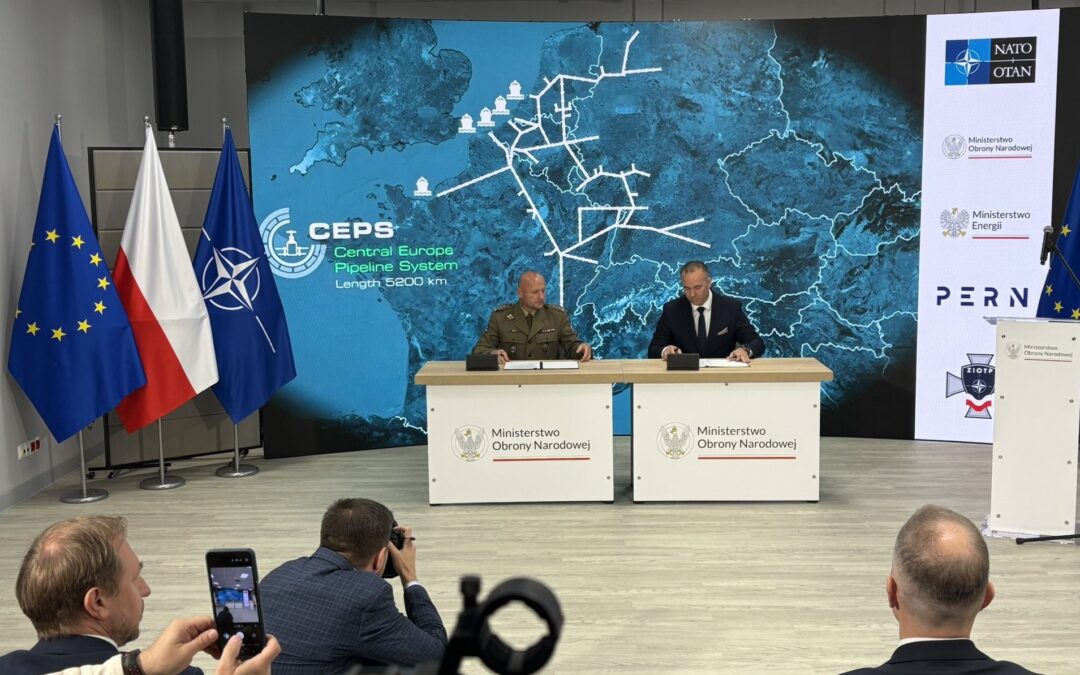Keep our news free from ads and paywalls by making a donation to support our work!

Notes from Poland is run by a small editorial team and is published by an independent, non-profit foundation that is funded through donations from our readers. We cannot do what we do without your support.
Poland has signed a preliminary agreement to connect to NATO’s pipeline system for delivering fuel for military purposes.
The plans are of “key importance for strengthening the state’s energy and defence security”, says Poland’s defence ministry, and will also help “strengthen its position as a strategic partner in the region”.
“Investment in fuel transmission and storage infrastructure fits into actions aimed at increasing the mobility of troops and the operational efficiency of the entire alliance,” it added.
Projekt ma kluczowe znaczenie dla wzmocnienia bezpieczeństwa energetycznego i obronnego państwa. Jego realizacja nie tylko zwiększy odporność Polski na kryzysy paliwowe, ale także umocni jej pozycję jako strategicznego partnera #NATO w regionie. Inwestycja w infrastrukturę… pic.twitter.com/WTtwJOOHSZ
— Ministerstwo Obrony Narodowej 🇵🇱 (@MON_GOV_PL) October 3, 2025
The NATO pipeline system was first developed during the Cold War. The largest of its elements – and the one to which Poland hopes to connect – is the Central Europe Pipeline System (CEPS), which currently includes Belgium, France, Germany, Luxembourg and the Netherlands.
The pipes transport fuel for air and ground vehicles for military purposes, though spare capacity can also be used for commercial traffic.
Today’s preliminary agreement to connect Poland to CEPS was signed by the NATO Security Investment Programme Management Office (ZIOTP) and PERN, a Polish state enterprise responsible for oil transportation and storage.
The plans envisage not only connecting Poland to the pipeline network but also building fuel storage facilities for use by NATO forces.
“On the battlefield, as the military says, three things are most important: equipment, ammunition and fuel,” said Polish deputy defence minister Cezary Tomczyk at today’s signing ceremony.
“Machines, such as tanks or combat vehicles, when they lack fuel, naturally cannot function,” he added. But “providing fuel in the conditions of a potential crisis, during a potential war, or in some extraordinary state, is extremely difficult”.
Tomczyk announced that NATO has granted funds to plan and design the project to connect Poland to CEPS. Only once those have been prepared – and approved by NATO and its members – will it be possible to outline a timeframe for completing the investment.
Jakub Wiech, an energy and defence analyst, hailed the plans as an “absolutely key investment, guaranteeing the fuel security of Polish and allied forces not only in the event of a conflict, but also in the case of an increase in the presence of NATO armed forces in Poland for the purpose of deterring an aggressor”.
Jutro podpisane zostanie wstępne porozumienie o współpracy pomiędzy Zakładem Inwestycji Organizacji Traktatu Północnoatlantyckiego oraz PERN S.A ws. rozbudowy polskiej infrastruktury paliwowej w celu przyłączenia jej do systemu rurociągów NATO.
To absolutnie kluczowa inwestycja,… pic.twitter.com/rlHdwOp4aC
— Jakub Wiech (@jakubwiech) October 2, 2025
Poland has rapidly ramped up its military spending since Russia’s full-scale invasion of Ukraine in 2022. It is now by far NATO’s highest relative spender, devoting around 4.5% of GDP to defence this year, rising to a planned 4.8% in 2026.
The country is also playing host to a growing amount of NATO equipment and forces, including Dutch F-35s, German Patriot batteries, and around 10,000 US troops.
After around 20 Russian drones violated Polish airspace last month, a number of NATO allies also moved to bolster their presence in Poland.
President @NawrockiKn has approved the deployment in Poland of foreign NATO forces as part of the alliance’s response to this week’s incursion by Russian drones into Polish airspace https://t.co/MMjPKL7fRO
— Notes from Poland 🇵🇱 (@notesfrompoland) September 14, 2025

Notes from Poland is run by a small editorial team and published by an independent, non-profit foundation that is funded through donations from our readers. We cannot do what we do without your support.
Main image: MON/X

Daniel Tilles is editor-in-chief of Notes from Poland. He has written on Polish affairs for a wide range of publications, including Foreign Policy, POLITICO Europe, EUobserver and Dziennik Gazeta Prawna.



















